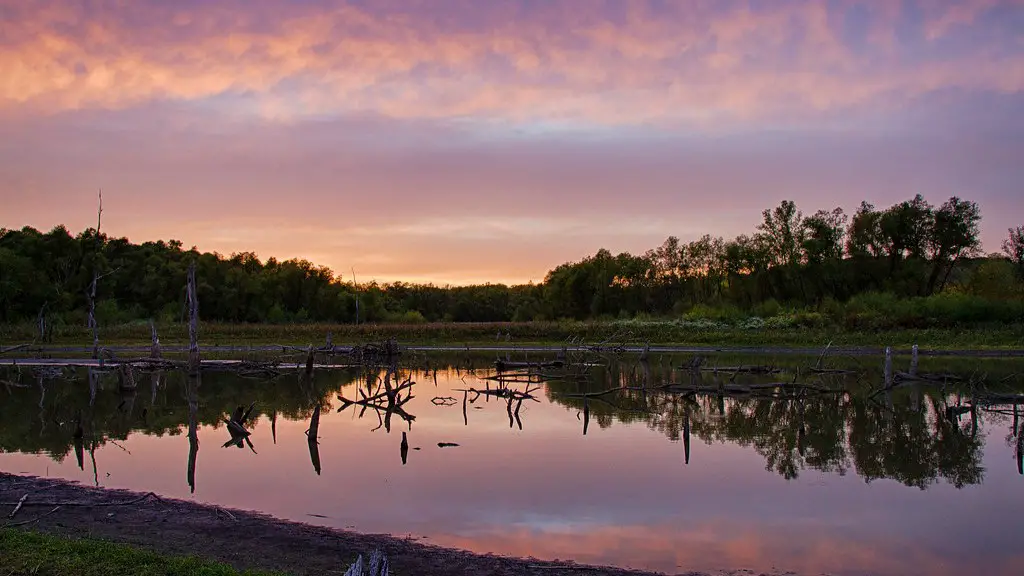The Nile is arguably the longest river in the world, stretching a total of 4,258 miles. From its source near the equator in Lake Victoria, it flows northward over the terrain of six countries – Tanzania, Uganda, the Democratic Republic of Congo, South Sudan, Ethiopia and finally Egypt – before emptying out into the Mediterranean Sea. The river’s origins and associated mythology, however, reach much further into antiquity than its course.
Humans have been living along and taming the Nile for thousands of years. To the ancient Egyptians, the river was inhabited by deities and provided the foundation for all of their spiritual and agricultural beliefs. Stories about the Nile’s creation date back to 3000 BC and many of these stories, along with the river’s yearly flooding, have become embedded within their culture.
From a more scientific point of view, the Nile’s creation began with the uplifting of the Ethiopian highlands millions of years ago. This created an area of precipitation, which eventually fed in to two rivers: the Blue Nile and the White Nile. The two rivers join together in the northern region of Sudan, giving the Nile its beginning.
The White Nile originates in the rain fed swamps and marshes of the Lake Victoria basin, while the Blue Nile begins in the highlands of Ethiopia and is fed mainly by melted snow. The Blue Nile contributes the majority of water to the river, however the White Nile contributes the most of sediment.
The Nile River is an integral part of the socio-economic structure of countries in East Africa. It is an important source of water for the region’s population and is used for drinking, transportation, agricultue, and recreation. In addition, it is one of the leading sources of hydro-power in East Africa, supplying power to over 40 million people.
However, the Nile is not without its issues. As climate change threatens the region and dams have been built up and down its tributaries, the river’s flow and stability is being compromised. As a result, the previously dependable floods the Nile provided annually have now become unpredictable and uncertain.
The Nile may be the longest river in the world, but it is far from untouchable. For thousands of years, human activities have had an effect on the river and its ecosystems, including the water’s salinity levels, the habitats of fish and birds, and water distribution. We must work to balance the benefits the Nile provides with the sustainability of the river and its ecosystems so that these resources will be available for generations to come.
The Significance of the Nile
The Nile is of great historical and cultural significance to both its source countries, as well as its delta at the Mediterranean Sea. The river has been the backdrop to some of humankind’s oldest and most influential civilizations, including the ancient Egyptians, Nubians, and Romans. Even today, three different countries share the river and its importance can’t be understated.
The importance of the Nile has been discussed when it comes to the settlement of agrarian civilizations, trade, and governance. The river is credited for influencing the development of some of the world’s first major cities, including Memphis, Thebes, and Alexandria.
Even the creative world has been greatly influenced by the Nile. Artists, musicians and poets from the region have written about its beauty and its myths. It is easy to see why: the river served as a source of life and abundance for centuries, providing sustenance for food, transportation, and access to other civilizations.
In ancient times, the Nile carried much more significance than just a lifeline. It was seen as a godly force, with the river’s annual flooding creating a natural cycle of life and death. This is seen in the ancient prayers and offerings found in temples up and down the Nile valley, as well as in the yearlong festivals and celebrations honouring the river.
The Nile has been a source of inspiration for stories throughout history, with many of them focused on the river’s creation, death, and rebirth. It is no surprise then that, in the modern day, the river has become a source of spiritual identity and contemplation.
Environmental Problems of the Nile
The Nile is facing a wide range of environmental problems, from pollution to the construction of dams upstream. The lack of adequate management and regulation of the river has caused widespread degradation. Pollution, particularly of agricultural runoff, is one of the most concerning environmental issues for the river.
In addition, many riverside towns have been built, leading to a proliferation of the Nile’s wetland habitats. These habitats are home to a variety of species and an important source of food and nutrition. However, the destruction of these habitats has had a drastic effect on the diversity of species in the Nile, along with its overall health.
The construction of dams on the Nile has also taken its toll on the river’s ecosystems. The dams have caused a decrease in the water’s flow, leading to changes in the river’s temperature and salinity, as well as the destruction of habitat. Furthermore, the destruction of the river’s tributaries has caused the water’s flow to be stagnant, with the waters eventually becoming toxic and unable to support fish and other wildlife.
The endangerment of species has been one of the most serious effects of the disruption of the Nile’s ecosystem. Many species of fish, amphibians, reptiles, and mammals are threatened or even extinct because of the destruction of their habitats. Furthermore, the pollution of the river has caused a decrease in the abundance of fish, an important source of food and nutrition for the people living along the river.
Finally, the Nile is also threatened by climate change. With increased temperatures, increased water evaporation and seasonal changes, the water’s flow may become erratic or even non-existent. In addition, the melting of the ice caps in Tunisia and Sudan may cause a decrease in the water’s flow, leading to further disruption to the river’s ecosystem.
The Future of the Nile
The future of the Nile is uncertain as climate change and increasing human populations threaten its sustainability. If current trends continue, there may be an extreme reduction in the amount of water that flows down the river, leading to drought and famine in countries along its banks.
In the face of these challenges, countries have been developing plans for the future. In Egypt, the country has committed itself to increasing agricultural productivity and improving its water management, while also promoting sustainable practices. In other countries, innovative projects are being developed to address water scarcity, changes in the river’s ecology, and climate change.
The key to the future of the Nile is collaboration. Countries along its banks must recognize the importance of the river and work to protect and preserve its environment. This includes reducing pollution, encouraging sustainable practices, and maintaining the health of its ecosystems.
In addition, it is important to invest in innovations that can help to maintain the river’s equilibrium. This includes the use of desalination plants and other water-saving technologies, as well as the construction of dams which can retain water for future use.
Conclusion
The Nile has played a vital role in the development of civilizations since antiquity and continues to provide sustenance and livelihoods to millions of people. In order to ensure its longevity and sustainability, it is important to focus on restoring and preserving its ecosystems, as well as investing in innovations that can help maintain the river’s balance and its many tributaries.





